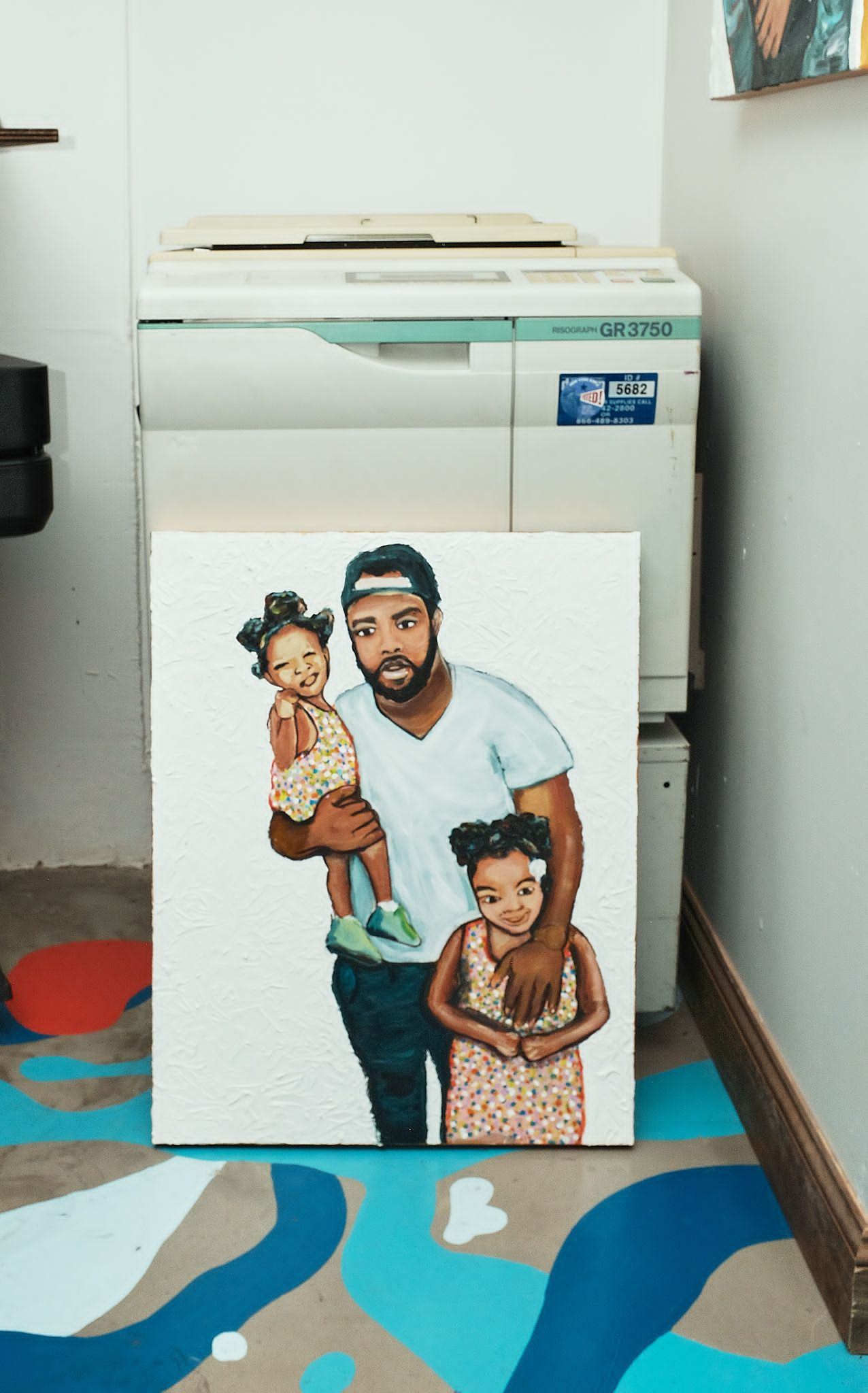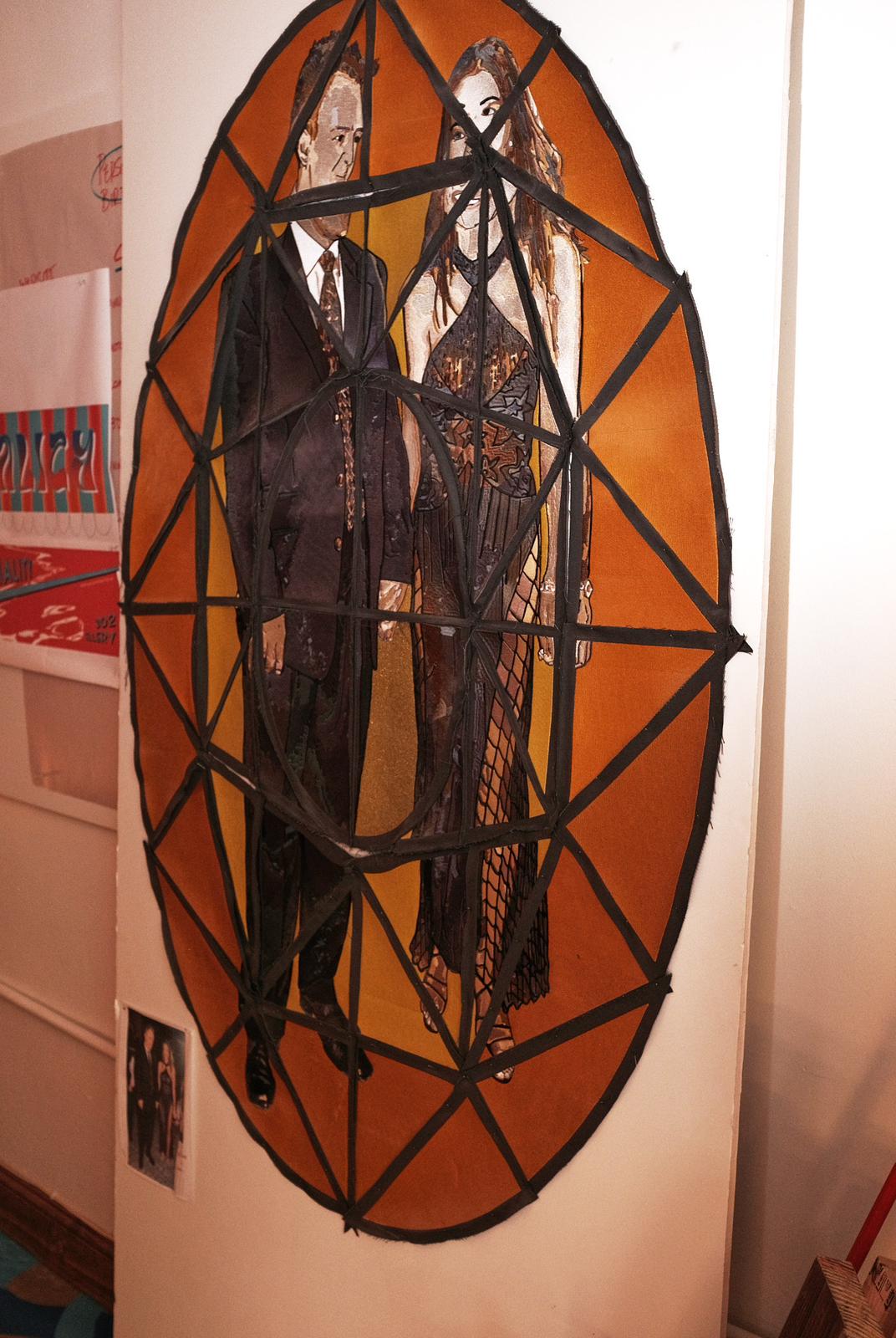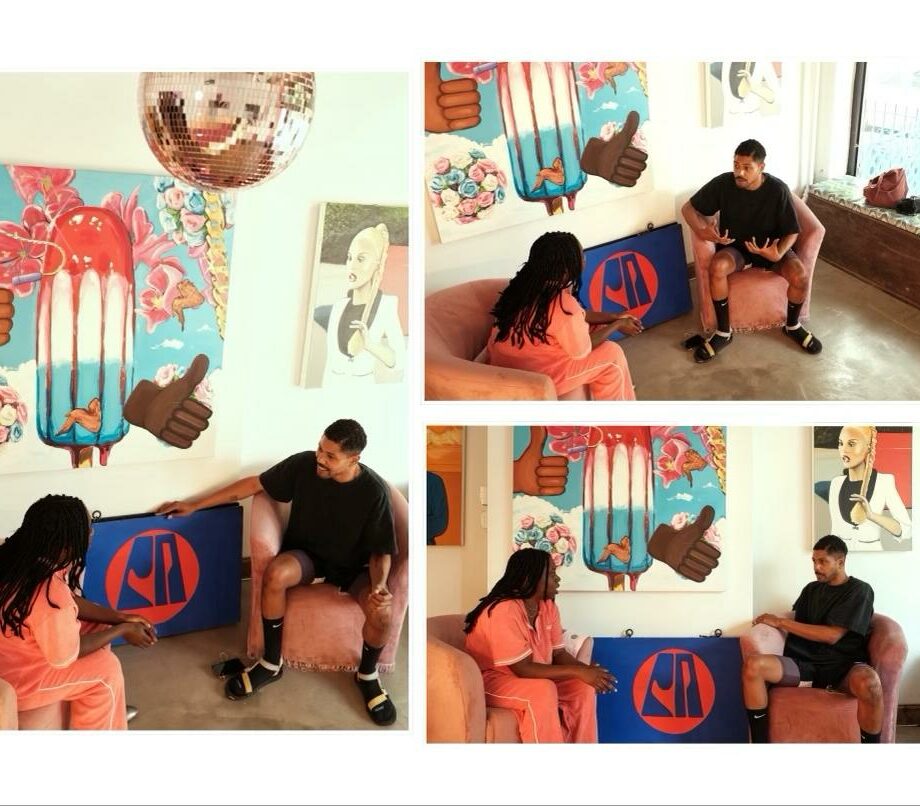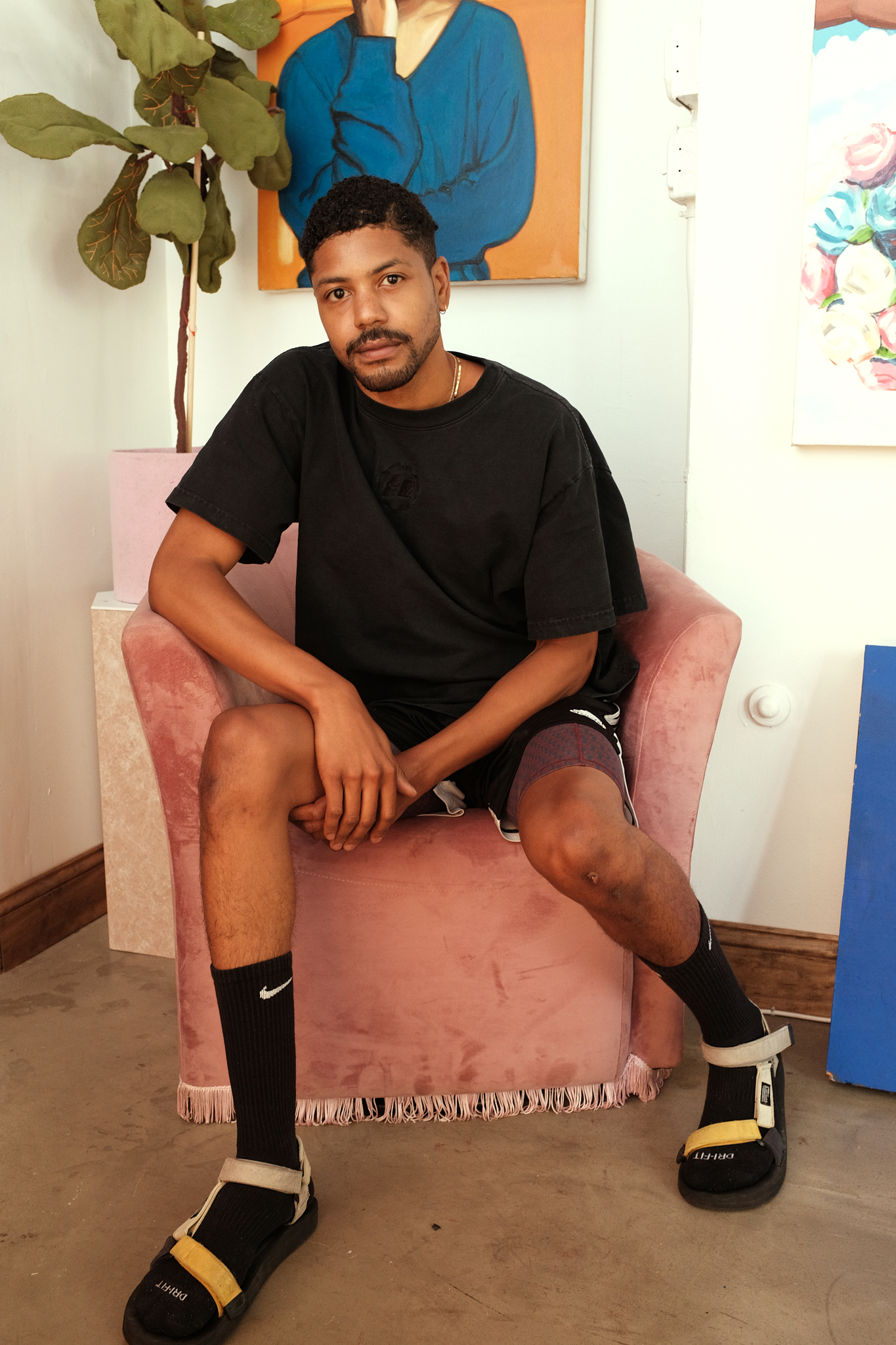Brooklyn- In the summer of 2020, just three months into the nationwide COVID-19 lockdown, I was still grappling with the murder of Ahmaud Arbery when news of George Floyd’s senseless killing further shook me. Feeling isolated and hopeless, I found myself immersed in a cycle of waking up early to witness disturbing images, protests, and riots on social media. Amidst this chaos, I joined local protests but wondered about the next steps beyond showing up and amplifying on social platforms.
During this tumultuous time, I received a notification from a new follower on Instagram named Public Assistants, created by interdisciplinary artist DonChristian Jones. Their bio’s message, “Undo respectability, aid mutually,” instantly resonated with me. Don, just six months before the COVID-19 lockdown, had grown frustrated with the bureaucratic structures of nonprofits where he had regularly worked as a teaching artist with incarcerated youth to create murals on Rikers Island and as an instructor at a long-running after-school program at Harvey Milk/Henrich Martin High School.
As an artist and community worker myself, I understood his frustration. Don and I had met years before when I was co-curating a performance series in Hudson, NY. We instantly connected, sharing similar interests in our work and practices, and naturally became frequent collaborators and dear friends.

Don’s infectious energy and natural magnetism fill any room he is in. Conversations with him were like entering a wormhole as he effortlessly switched between social politics, the latest news from the blogs, and brainstorming ideas for upcoming community murals, workshops, and projects for Public Assistants—all within a few minutes. I always thought of Don as a force of chaotic good, his eyes sparkling as he absorbed new information.
“Pull up” with a location drop appeared in Public Assistants’ Instagram stories. Don had acquired access to a public building practically abandoned; he “knew a guy who knew a guy.” Don had taken to this new platform to process and digest the headlines and actions of the day with a refreshing wit, even from a distance. His regular monologues concluded with a simple call to action, inviting others to create something new and radical in the chaotic lockdown space. It was as if he was saying, without explicitly saying it, that while we were confronting many challenges simultaneously, there was still something we could do—be active and create community.
This space served as a hub for a collective of artists and others who were seeking a sense of community during the turmoil of 2020. It was a base of operations for engaging in community work and practising art.

When I asked Don what compelled him at that moment to start PA, he recalled, “There was this sense of urgency for us to stay alive in our community, and we believed that staying alive meant creating things together. We stayed alive through dancing, eating, and protesting. That’s why I thought, ‘I got the keys to that space.’ I held up a picture of a tip jar one day and said, ‘Help us clean up this place,’ and the next morning, we had $1,000. And that’s how it started. About 10 people showed up the next day, then 15 people the day after that. It continued like that for five months. There wasn’t a day when people didn’t show up. There was so much work to be done, and people kept reaching out to us to collaborate.”
A banner created by Public Assistants for the Black Trans Liberation March ended up splashing all over the feeds and being used in major publications across the country to cover the march. This action quickly resulted in more requests from community organizers for banners and murals. Additionally, PA engaged in their own community programming, including a summer youth mural workshop series, CPR training, a radio station, community gardens, and more.
Gradually, Public Assistants became a space for collective action and provided an outlet for many individuals to contribute meaningfully whilst allowing artists within the collective to develop their practices.
“It’s the human connection, the joy, the beauty of being able to tap into this… the ability to utilize creativity to provide resources for those in need,” says Victor A. Saint-Hilaire, an illustrator, muralist, and long-time friend/collaborator of Don’s. “I was focused on my community work and my artistic practices, so it’s amazing to expand our horizons and understand what’s happening around us and what people may require.”

Ky’Naisha (Nene) Severe, a former student of Don’s, joined Public Assistants after receiving a message from him. At the time, Nene was living in the Bronx and isolated due to the pandemic. Intrigued, she attended an event. Recalling her experience, she says: “I was just sitting there, having a good time. We were talking about how our pandemic was going, and they had a sheet of ideas and what they wanted to do.” Her interest grew, and she now serves as a program associate for Public Assistants, assisting Don with administrative tasks and organising people.
“No one is an expert here. Many people have come together to try something new or pursue something they’ve always wanted to learn. We are all learning together,” Don says with a coy smile and a shrug, his eyes darting from side to side as if anticipating canned laughter hinting at the underlying absurdity and humour in this endeavour.
Christian DeFranco, a media strategist, found solace in his long-time interest in gardening within the old space. He reflects on their early days, “In the beginning, we were wondering what we could do with the space. We saw a crack in the pavement and started cutting something out of it. It was an experiment, but then we realised we had the space to grow produce and give back. When the fridge arrived, we saw that we could grow something and put it back in the fridge. It’s funny how it started as an experiment and actually worked.”
After being unceremoniously kicked out of their space at the end of 2021, PA has led a more nomadic existence in Brooklyn, searching for the right location while continuing its community workshops and mural support. Reflecting on that time, Don speaks about it in a more distant manner, saying, “We were initially welcomed with open arms, but things quickly became contentious after we transformed and commandeered the space. They wanted it back, to sell it. It escalated rapidly, and we fought against the impending developers and the demolition for months after our displacement, all in solidarity with the community. They wanted us to stay, even starting a petition to keep us there. It was a special experience, regardless of the outcome. We loved our neighbours, and they became like family because we saw them nearly every day.”

As you enter the new space in Bushwick, it invokes the atmosphere of a hair salon. There’s a large oval-shaped desk painted light blue with round desk lights in the corner, mirrored ceilings, black and white checker-print floors, and two pink frilly armchairs in front, instantly creating a fun and chill atmosphere.
The walls are adorned with art from collaborators and friends, including prints from Martine Gutierrez and Jasmine Haynes and a portraiture series by DonChristian featuring community members from a live painting session at a memorial. Soft sculptures of embroidered flowers are placed around the space, creations by Danica Pantic, a former production designer who will be using the PA space not only for programming but also as an artist studio.
Currently, Danica is working on an embroidery series focused on Serbian war criminals. She explains, “The history is thoroughly researched, so I’ve been doing a lot of reading about it. These people were criminals who were idolised by the public. I decided to make these photo panels because a significant part of the Civil War was about territory and the division of the country. I wanted to create these topological pieces that resemble maps when taken out of context.” Danica will be running the PA radio station, which plans to broadcast live from their new home. She has previously helped with PA merchandise sales to support their activities.
In the back of the space is the studio room, featuring a long desk on the left filled with computers, mood boards, and drawing tables. On the right, there’s a brainstorming map showcasing upcoming PA activities and personal studio practices.
Everyone gathers in front of the computer, engaging in a discussion about the typography and design of the new awning. The space used to be a dry cleaners, as evidenced by the old awning that still hangs outside, although they joke about someone bringing a bag of clothes, mistaking the place for a still-operating dry cleaner.

After some back and forth, Don encourages everyone to gather around and watch a new video from up-and-coming Brooklyn rappers Breezylynn & Lola Brookes.
Despite the many changes in the past year, the vibrancy of PA has not faltered. It feels more like a community artist response network infused with joyous energy rather than a typical non-profit structure. PA thrives on responding to the needs of their community, not only in their neighbourhood but throughout the city. It is limitless in a way, with a key component being the search for joy and humour in everything they do.
Spaces that build a community for artists beyond their solitary practices are rare to find. PA’s model encourages mutual learning and the sharing of expertise. The goal goes beyond individual work, and the strength lies in collectively creating something that lives outside themselves.
When asked about what’s next for PA, Don expresses excitement about the future. He says, “In this next iteration of PA, in a new place and taking a new shape, we’re leaning into our role as a design and production house. We want to help tell the stories of our communities, disseminate their art and information, print and publish, produce and broadcast. We’ll be re-launching our streaming community radio, creating zines, performances, and artworks—supporting the work of underrepresented Black, Brown, and Queer creators, organisers, and cultural workers. It’s all in the spirit of creating our own table to sit at, with joy at the forefront.”

Words by Shanekia McIntosh





